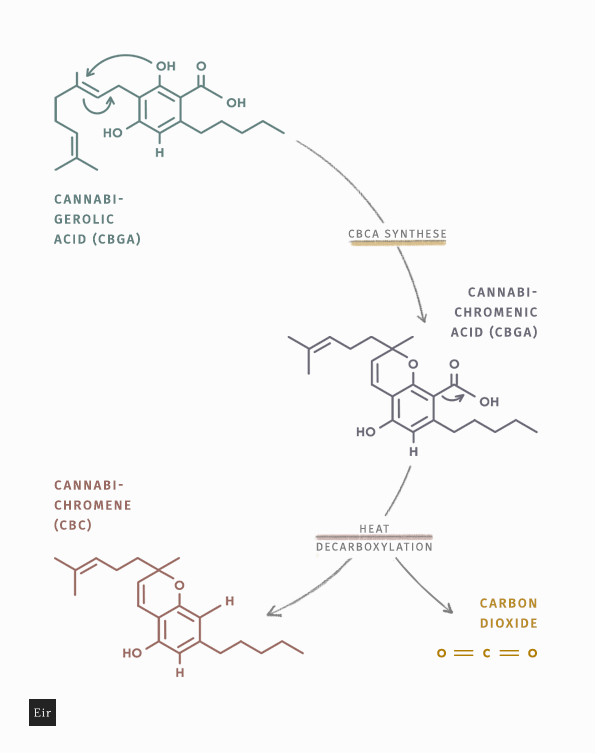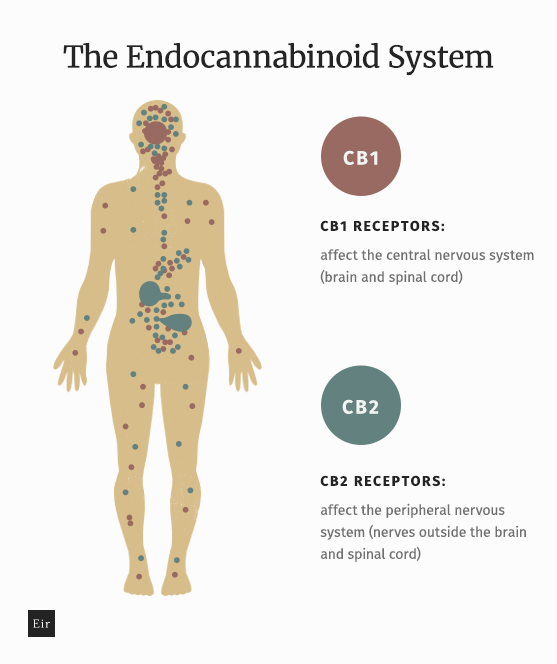
WHAT IS CBC?
CBC - WHAT IS IT?
Cannabichromene, better known as CBC, is one of the elements of the cannabinoid blend found in cannabis plants. It is a phytocannabinoid, produced at a very early stage of cannabis flowering, which is structurally similar to other cannabinoids such as THC, CBD, and CBN. Although this compound is not yet well known to us, more and more scientists are investigating its potential health benefits. CBC, like CBD or CBG, has no narcotic effect, which is determined by the CB1 receptor.
THE HISTORY OF CBC
Cannabichromene was discovered by Gaoni and Mechoulam in 1966, and almost simultaneously by Claussen, who is also considered as the father of CBC. We owe the current state of knowledge about this substance to three scientists in particular, without whom the world would never have heard of CBC.
HOW IS CBC FORMED?
Cannabichromene is the result of a decarboxylation process. Enzymes convert cannabigerolic acid into cannabidiolic acid (CBD-A), tetrahydrocannabinolic acid (THC-A) and cannabichromenic acid (CBC-A). Then, under the influence of heat, CBC-A loses a CO2 particle, becoming CBC. A similar mechanism causes THC or CBD.

CBC AND OTHER CANNABINOIDS
The concentration of CBC in most cannabis strains usually remains fairly low compared to other cannabinoids. However, there is a great similarity at the molecular level between CBC and other compounds. Cannabichromene, like CBD or THC, is conditioned by CBG , which acts chemically as a precursor to these three major cannabinoids. CBC owes its most effective action to the company of other cannabinoids and terpenes, thus maximizing the potential therapeutic spectrum of the entire plant.
CBC ACTION
CBC IN THE ENDOCANNABINOID SYSTEM
Like all cannabinoids, CBC interacts with the endocannabinoid system. This system is present in every mammal, affecting the work of many parts of the body. However, it affects this system differently than THC and CBD. Cannabichromene does not bind well to CB1, which greatly affects the central nervous system, causing a feeling of intoxication. CBC may have a positive effect on increasing the number of endocannabinoids needed to maintain normal health.

HOW DOES CBC WORK?
CBC is widely considered to bind indirectly with the ECS through stimulation of the bodyís naturally occurring endocannabinoids, anandamide, and 2-AG. CBC may also act as an agonist of the TRPV1 and TRPA1 receptors, which regulate pain sensitivity and body temperature. Cannabichromene can also bind to CB1 and CB2 receptors. However, CBC is currently undergoing many studies to explain the complexity of this substance.
THE HEALTH BENEFITS OF CBC
Research on the health benefits of CBC dates back to 1981 when it was attempted to prove the anti-inflammatory, antibacterial, and antifungal properties of CBC in rats. The results then confirmed the anti-inflammatory effect of CBC better than phenylbutazone, the NSAID anti-inflammatory drug. It has also been shown to be a powerful antibacterial agent The latest research shows that this compound might be able to treat:
- Pain. As with most cannabinoids, CBC seems to reduce the pain associated with osteoarthritis. This property of CBD was confirmed by in-vitro research from 2011.
- Inflammation. The 2011 study also found that CBC has anti-inflammatory properties. This was also confirmed by another study, the results of which proved that CBC in combination with THC reduces inflammation.
- Acne. The results of 2016 research suggest that CBC may also treat acne by regulating the amount of sebum produced by the skin. This, in combination with its anti-inflammatory properties, means that CBC can be effective in fighting acne.
- Depression. The antidepressant effects of CBC, along with THC, were confirmed by research from 2010, according to which the combination of these cannabinoids can be effectively used to reduce symptoms of depression.
- Cancer. A 2006 study which examined the effect of some cannabinoids on cancer cells, showed that CBC, after CBG, is the second-most-potent cannabinoid for slowing cancer cells. Unfortunately, we are still waiting for similar studies, this time on human cells.
HOW BEST TO USE CBC?
Since relatively little information is currently available about cannabichromene, there are many disputes regarding the dosage and health consequences of taking CBC. So far, no information suggests the potential for dangerous side effects from taking CBC. For this reason, you should consult your doctor before using cannabichromene. However, this compound is not covered by the Convention on Psychotropic Substances, which means that it can be used legally.
WHERE TO LOOK FOR CBC?
Unfortunately, extracts from cannabichromene such as THC or CBD cannot be obtained. However, many low THC products have high CBC content. CBC oils are available on the market, as well as other products containing this compound. However, they are not as widely available as products containing THC or CBD. This situation may be due mainly to the insufficient number of studies carried out to analyze cannabichromene. However, cannabichromene can also be found as a component of many full-spectrum CBD oils.
















